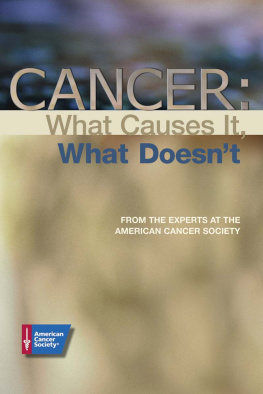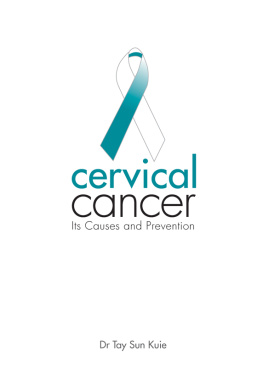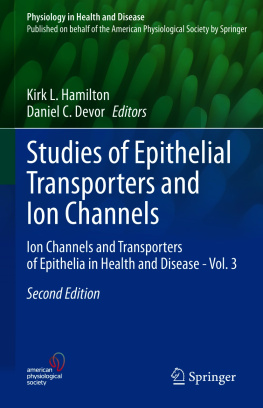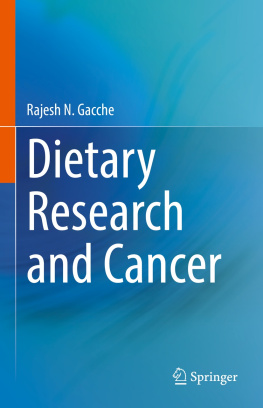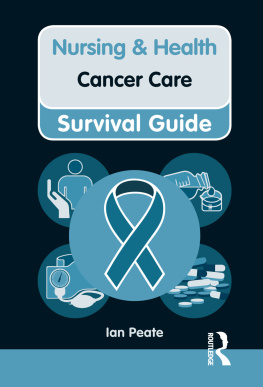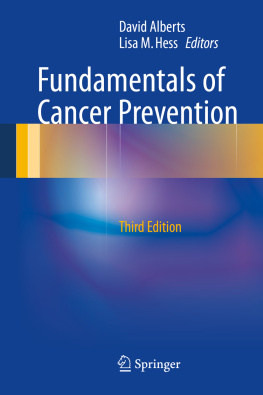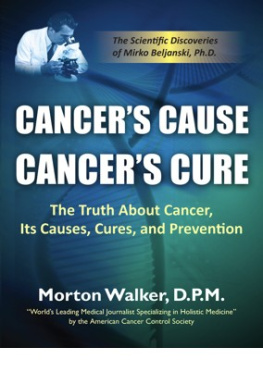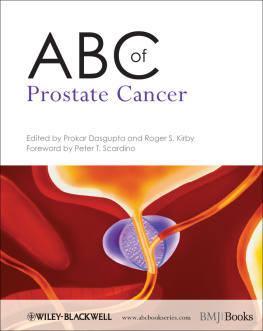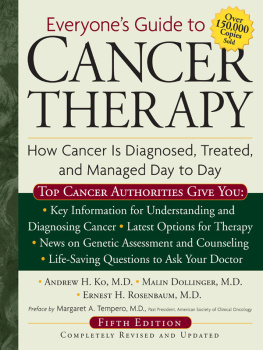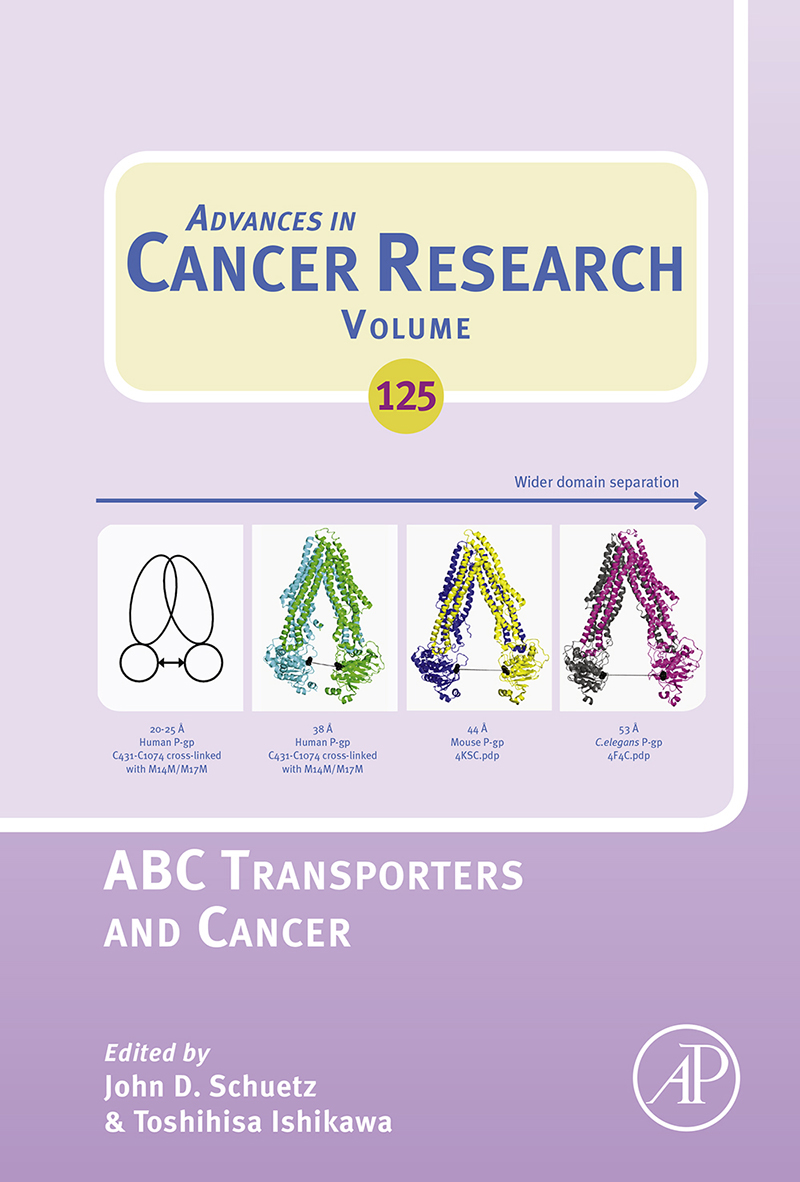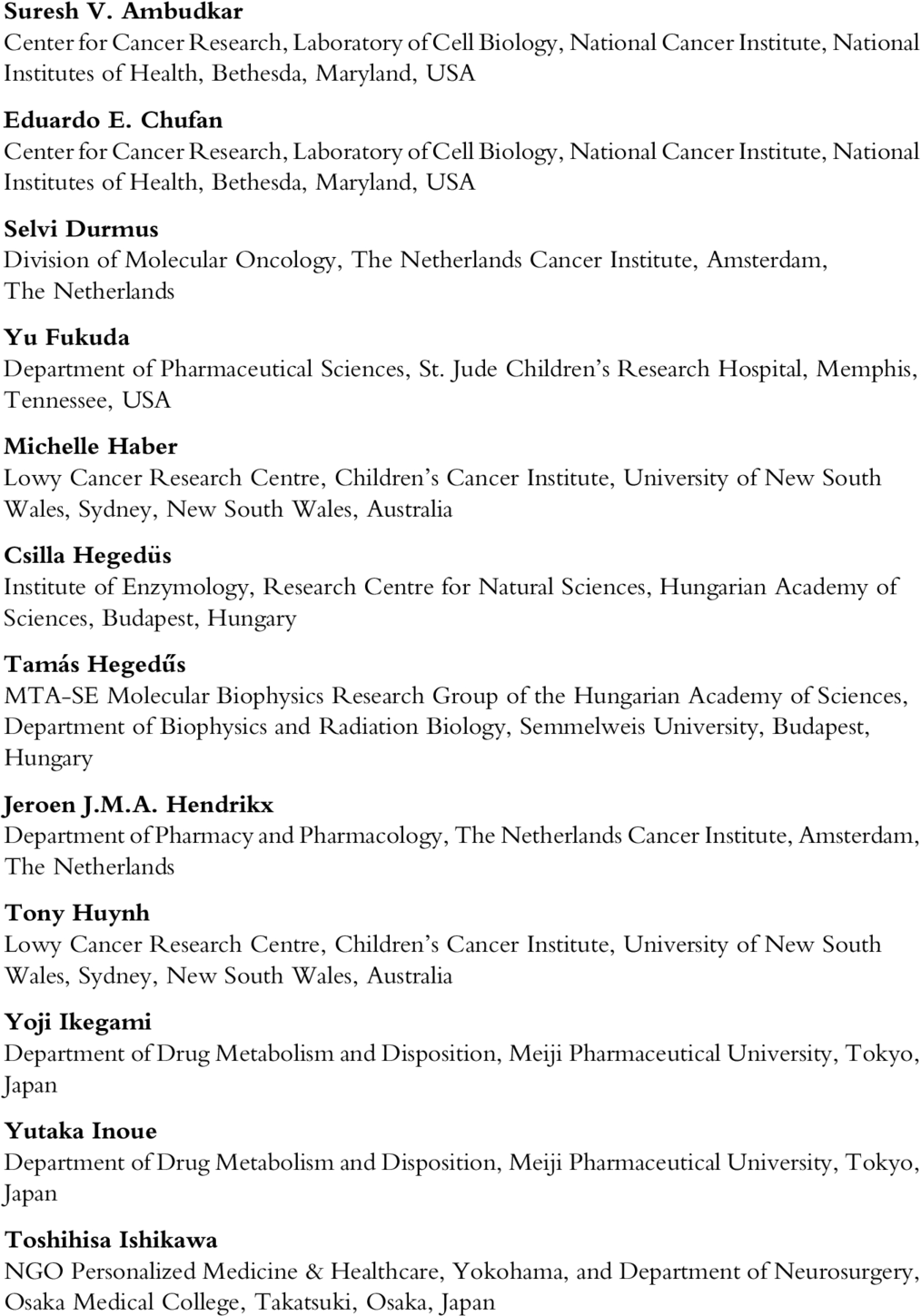Copyright
Dedication
We dedicate this book to Ms. Naoko Ishikawa who passed away on December 10, 2014. She was diagnosed with stage 4 ovarian cancer and treated with carboplatin, paclitaxel, and avastin. However, because of the severe adverse effects of avastin (anti-VEGF agent), Naoko suffered gastrointestinal perforation and peritonitis secondary to the perforation. Therefore, she was not allowed to eat or drink anything. During cancer therapy over 4 months, she was maintained by CV-TPN and treatment with various kinds of antibiotics. She challenged TC chemotherapy (paclitaxel and carboplatin) four times in total. However, she could not succeed in fighting against multidrug resistance in both ovarian cancer and peritonitis microbes in her own body. This indicates the difficulty of ABC transporter-mediated multidrug resistance. Our further research (both basic and clinic) is needed to solve this tough problem and to save patients lives.
Contributors
Preface
John D. Schuetz
Toshihisa Ishikawa
ATP-binding cassette (ABC) transporters typically consist of two integral membrane domains containing six alpha helices and two cytosolic nucleotide-binding domains that, for plasma membrane proteins, couple ATP hydrolysis to the movement of substances to the extracellular space. While ABC transporters form a large superfamily of active transport systems, in multiple phyla, the focus of this special issue of Advances in Cancer Research is on their role in the biology and therapy of cancer.
The first mammalian drug resistance ABC transporter, P-glycoprotein (aka P-gp, MDR1, ABCB1), functionally identified almost 40 years ago, heralded the idea that most forms of impaired tumor response to chemotherapy (drug resistance) would be accounted for by this one protein. However, despite its polyspecificity, certain classes of drugs (e.g., nucleosides, antifolates, and camptothecins) were not exported by P-glycoprotein. As we moved forward, a more complex contemporary view of ABC transporters in cancer chemotherapy has evolved. The role of ABC transporters in cancer can now be viewed from multiple complementary perspectives, all of which are likely to impact therapeutic response. First, some cancers expressing high levels of ABC transporters poorly respond to therapy due to drug export. Second, expression of ABC transporters in normal tissues limits absorption, distribution, and excretion (ADME) of chemotherapeutic drugs. Third, the polyspecificity of many ABC transporters impacts drug classes. Fourth, exporters of endogenous molecules, some ABC transporters have the potential to impact tumor growth and survival. Within this ABC transporters and Input Advances in Cancer Research volume, authors variously discuss therapeutically relevant transporters impact on ADME, in particular limiting brain penetration, and also describe how transporters in the bloodbrain barrier (BBB) are regulated, either up or down; in essence, the BBB provided by ABC transporters is dynamic and potentially modulateable. Other authors review the current state of our biochemical and structural knowledge of P-gp. In particular, two reviews highlight insights garnered not just from recent structural studies but also from knowledge of how a transporter's membrane milieu affects activity. The membrane environment, especially membrane cholesterol content, has a marked impact on activity.
ABC transporters are expressed in many cells that form barriers (e.g., intestinal epithelial cells and the BBB). Two reviews not only highlight ABC transporters role, with respect to anticancer drug oral absorption, but also describe ABC transporters impact and regulation at the BBB, an increasingly important area in the treatment of brain tumors or metastasis. Highlights include conceptual insights into how genetic deletion of two prominent BBB ABC transporters disproportionately increases the brain accumulation of their drug substrates. Based on this knowledge, one could envision concurrent inhibition of these BBB transporters as a viable strategy to increase the brain penetration of many anticancer drugs (e.g., TKIs and PARP inhibitors) that are substrates of these ABC transporters. The other concept of the BBB is that ABC transporter expression in this endothelial barrier is not static, but dynamic. This review summarizes the complex signaling and transcription networks that respond to xenobiotic ligands or other exogenous or endogenous internal signals (e.g., reactive oxygen species) that might be activated during the course of disease. Targeting these signaling events provides opportunities to rapidly and reversibly increase brain accumulation of drugs that are substrates for the transporters (potentially good). The clinical usefulness of targeting signaling to reduce efflux transporter activity and improve drug delivery to the CNS remains to be established.
Two chapters highlight recent investigations into the structure and biochemical properties of ABC transporters, providing insights into issues regarding polyspecificity and the role of membrane environment. For instance, the large, apparently flexible, internal cavity of murine ABCB1 provides a structural basis for earlier kinetic studies characterizing the properties of its multiple binding sites. Further, studies reveal how membrane lipid interactions (e.g., cholesterol), in some cases via specific domains, affect the catalytic activity of ABCB1 and ABCG2. Moreover, these studies underscore how substrates of these transporters gain access to the transporter through the membrane lipid phase rather than through the cytosol.
Insights into the impact of ABC transporters on therapeutic response and biology are provided by three chapters, focusing on neuroblastoma, myeloid leukemia, or brain tumors. With respect to neuroblastoma, survival rates are less than 50%, for those patients harboring MYCN overexpression or amplification, survival rates are much less. This might be related to ABC transporters, some are upregulated by MYCN, with consequent drug resistance. Another possibility is that upregulated ABC transporters affect the growth and survival of the neuroblastoma cells. Some endogenous substances affect hematopoietic growth, survival, and self-renewal, and the ability of ABC transporters to export these endogenous substances may facilitate leukemogenesis by providing these same advantages to leukemic progenitors. If so, ABC transporter inhibitors might provide a direct benefit to AML chemotherapy by both increasing intracellular drug accumulation and removing potential survival advantages to leukemic progenitors. The surgical treatment and diagnosis of brain tumors, such as glioblastomas, can potentially be enhanced by disrupting porphyrin homeostasis in these cancer cells. Exogenous administration of a porphyrin precursor, along with an inhibitor of ABCG2 (a regulator of cellular porphyrin accumulation), is likely to impact diagnosis and treatment of these highly resistant tumors.



